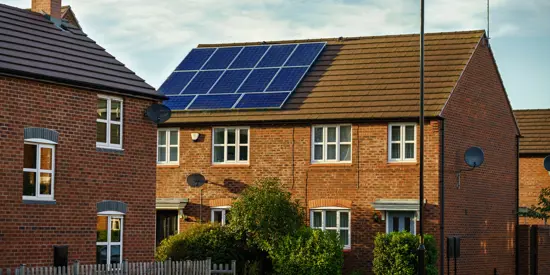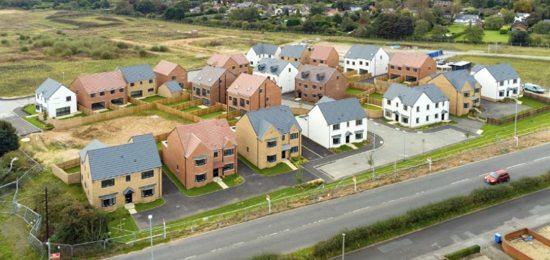2024 in review: building ambition for the UK housing market
This year has been transformative for the UK housing market. We’ve seen the arrival of a new government delivering their first Autumn Budget, a bold commitment to accelerating housebuilding, and the first Bank of England interest rate cut in four years—all significant milestones shaping the sector.
While many will be disappointed in 2024’s lacklustre sales performance, interest rates are finally on a downward trajectory and equity is returning to the market, creating a strong foundation for 2025. Yet, despite the progress made, the Government’s ambitious 1.5m target seems a long way off.
Looking back at housebuilding
It will come as no surprise that we’ve seen a slump in housebuilding this year. ONS data revealed a 60.3% reduction in new starts for all dwellings in Q2 2024 compared to Q2 2023. Hopes that 300,000 homes would be built this year quickly faded away, with estimates suggesting that the UK will have built 153,000 new homes as we round off the year, a little over half the original target. The figures tell a clear story – 2025 will be a do or die year in Labour’s promise to Get Britain Building.
Now or never for planning reform
The UK planning system continues to be a large obstacle to residential development. Earlier in the year, we brought together key leading industry figures to launch a manifesto outlining eight urgent calls to reform our planning system and accelerate the delivery of housing.
Our findings concluded that for effective reform of the system, the planning system needs to see greater transparency, accountability and commerciality instilled at every level. Additionally, reform of Section 106 agreements and CIL schemes is required to bring down both costs and delays for SME developers, which deliver over 60% of our new housing stock. However, with recent proposals from Angela Rayner calling for long overdue reform of our planning system, combined with ongoing housebuilding ambition, there is hope for a more seamless planning process in the year ahead.
The financial landscape
We can expect to see continued reductions in interest rates – the BoE Governor has stated he expects four cuts next year. There are some concerns that the Government’s policies could be inflationary, potentially delaying rate cuts and affecting borrowing costs, particularly for mortgages, but time will tell whether these inflationary fears will come to fruition.
This forecast for interest rates should translate into more activity in the housing market – new loans, new starts, and an increase in transaction volumes. In tandem with this, we anticipate a return to stability in the long-term lending market. A recovery of this market is essential when building long term, strong investments such as care homes and purpose-built student accommodation, assets that are foundational to the life cycle and ecosystem of our housing sector.
This time last year, the ‘equity gap’ was a key challenge within the development finance marketplace and persisted as an obstacle to getting project finance off the ground. As we close off 2024, we are beginning to see equity return to the market and we should see more sites break ground in 2025. Supporting this is a growing appetite at the top of the capital stack from senior mezzanine, equity and debt providers likely to bridge the equity gap and boost financing activity.
What should borrowers expect?
There will be increased competition and good terms available in the coming year and we should see sites being traded more frequently. However, there is still a fair amount of bad news in some loan portfolios, and there have been extraordinary levels of forbearance around the market. We’re likely to see 2025 as the year of the crystallisation of these losses and so some uncertainty and caution will endure. If you are a borrower in difficulty, it is likely to get a whole lot worse in 2025, as lenders look to bring problems to a conclusion.
Getting regulation-ready
Next year's Future Homes Standard (FHS) is likely to be the biggest shake up in building regulations in a generation. The new set of rules, coming into force in 2025, will change building standards and reduce the carbon emissions of new homes built in England. As ever, planning and remaining one step ahead of these regulations is crucial. With that in mind, at Atelier, we launched our own set of guidance for residential developers navigating these changes.
The FHS is expected to add an additional cost of between £15,000-18,000 per new residential unit to ensure compliance. Developers and industry professionals must begin to factor in these regulations and additional costs to their planning for the year ahead now before they’re caught out.
Looking ahead
As the market begins to shift, we hope to see a reduction in pessimism about the housing market, noting that we are unlikely to see a return of optimism just yet. What the industry needs is a return to velocity and momentum, where the whole supply chain speeds up, deals get done and product gets sold. It makes me think of that old saying – if you want something done, ask a busy person. Get this industry on its feet, working towards 1.5 million new homes and it will be full of busy people getting things done.


